Introduction: The Overload Problem in Onboarding
Key Insight: Onboarding can overwhelm new hires, burying enthusiasm under a flood of information.
Imagine a new hire joining your organisation, eager to contribute, only to be overwhelmed by policies, jargon, and procedures by lunchtime. This is where many onboarding programmes fail. Cognitive Load Theory (CLT) offers a solution to transform this process into a structured and empowering experience.
What is Cognitive Load Theory?
Developed by John Sweller in the 1980s, Cognitive Load Theory (CLT) highlights the limitations of our working memory. CLT categorises cognitive load into three types:
- Intrinsic Load: Complexity of the task/content.
- Extraneous Load: Distractions or irrelevant information.
- Germane Load: Effort focused on understanding and creating connections.
Key Application
Balancing these loads enables HR managers to design impactful onboarding programmes.
Why Cognitive Load Theory Matters in Onboarding
Effective onboarding directly influences employee success. Mismanaged cognitive load leads to:
- Decreased Retention: Employees forget critical information.
- Reduced Productivity: New hires struggle to perform effectively.
- Higher Turnover: Poor onboarding causes disengagement and dissatisfaction.
Managing cognitive load improves learning, accelerates productivity, and enhances engagement.
The Three Types of Cognitive Load in Onboarding
1. Intrinsic Load: Complexity of the Task
Some tasks naturally require more mental effort.
Strategies to Manage Intrinsic Load:
- Divide tasks into manageable steps.
- Teach foundational knowledge before advancing.
Example:
Train financial analysts on basic reporting tools before introducing forecasting techniques.
2. Extraneous Load: Eliminate Distractions
Poor materials or irrelevant content increases cognitive overload.
How to Minimise Extraneous Load:
- Use visually engaging materials like flowcharts and infographics.
- Focus on essentials, avoiding information overload.
Example:
Replace a lengthy onboarding presentation with an interactive guide highlighting key tools and policies.
3. Germane Load: Maximise Meaningful Effort
This load fosters deep understanding and skill-building.
Enhance Germane Load by:
- Encouraging active learning through role-playing.
- Providing immediate feedback.
Example:
Use simulated scenarios for customer service training to develop real-world skills.
Applying Cognitive Load Theory to Onboarding
1. Phase Your Onboarding Programme
Break onboarding into phases to reduce overwhelm.
Example:
- Day 1: Company culture and tools.
- Week 1: Role-specific training.
- Month 1: Personalised growth plans.
2. Use Visual Aids
Visuals simplify complex information and improve retention.
Example:
Replace manuals with flowcharts, videos, and infographics to guide employees through processes.
3. Incorporate Active Learning
Active participation connects theory to practice.
Example:
Use gamified modules or role-playing to reinforce key concepts.
4. Provide Just-in-Time Resources
Offer information when needed instead of all at once.
Example:
Deploy a digital knowledge base or AI chatbot to address common questions.
Benefits of Cognitive Load Theory in Onboarding
- Improved Retention: Employees remember key information.
- Faster Productivity: Hires reach potential sooner.
- Increased Engagement: Employees feel valued.
- Reduced Turnover: Smoother transitions lead to higher satisfaction.
Conclusion: Make Cognitive Load Your Ally
Applying Cognitive Load Theory can transform onboarding into a strategic tool that empowers employees and enhances long-term success.
Remember: Onboarding isn’t just about delivering information—it’s about fostering confidence and belonging.
Takeaways
- Cognitive Load Theory identifies three types of effort: Intrinsic, Extraneous, and Germane.
- Balancing these loads optimises learning and retention.
- Strategies include phased learning, visual aids, active participation, and just-in-time resources.
Tips for the Workplace
- Audit Materials: Remove unnecessary or poorly structured content.
- Invest in Tools: Use platforms like Cushi.ai for personalised learning.
- Encourage Feedback: Check in with new hires regularly.
- Leverage Visuals: Simplify processes with diagrams and videos.
- Create Phased Programmes: Reduce cognitive overload by spacing out onboarding.
References
- Sweller, J. (1988). Cognitive Load During Problem Solving: Effects on Learning. Cognitive Science. https://doi.org/10.1016/0364-0213(88)90023-7
- Mayer, R. E. (2005). Cognitive Theory of Multimedia Learning. Cambridge University Press. https://doi.org/10.1017/CBO9780511816819
- Van Merriënboer, J. J. G., & Sweller, J. (2005). Cognitive Load Theory and Complex Learning. Educational Psychology Review. https://doi.org/10.1007/s10648-005-3951-0
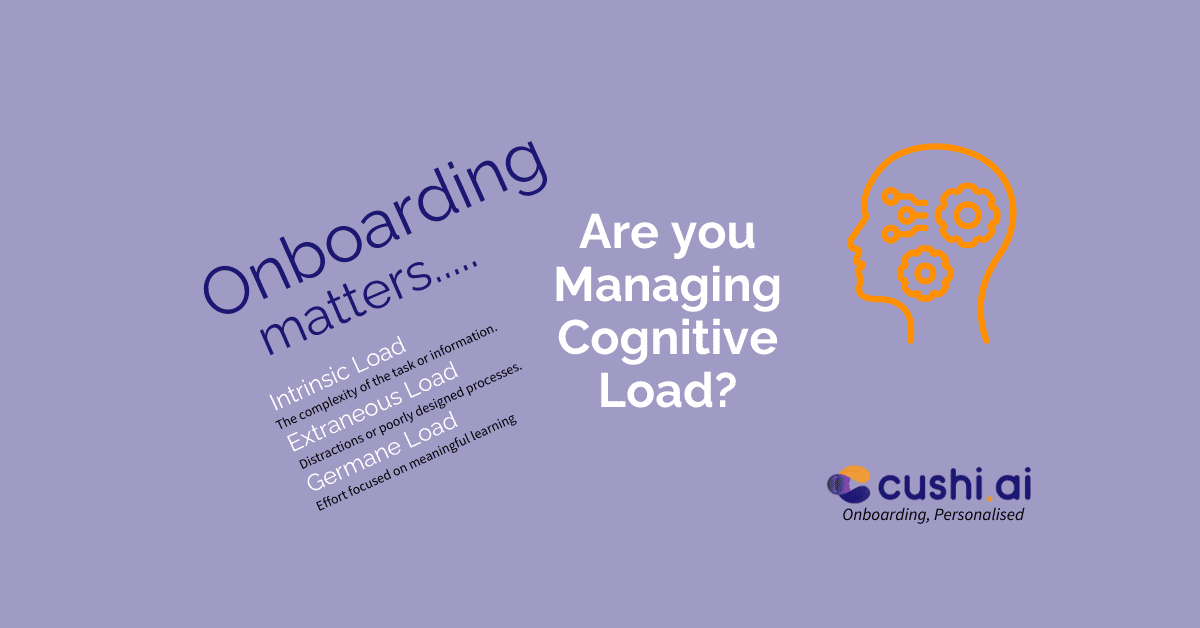
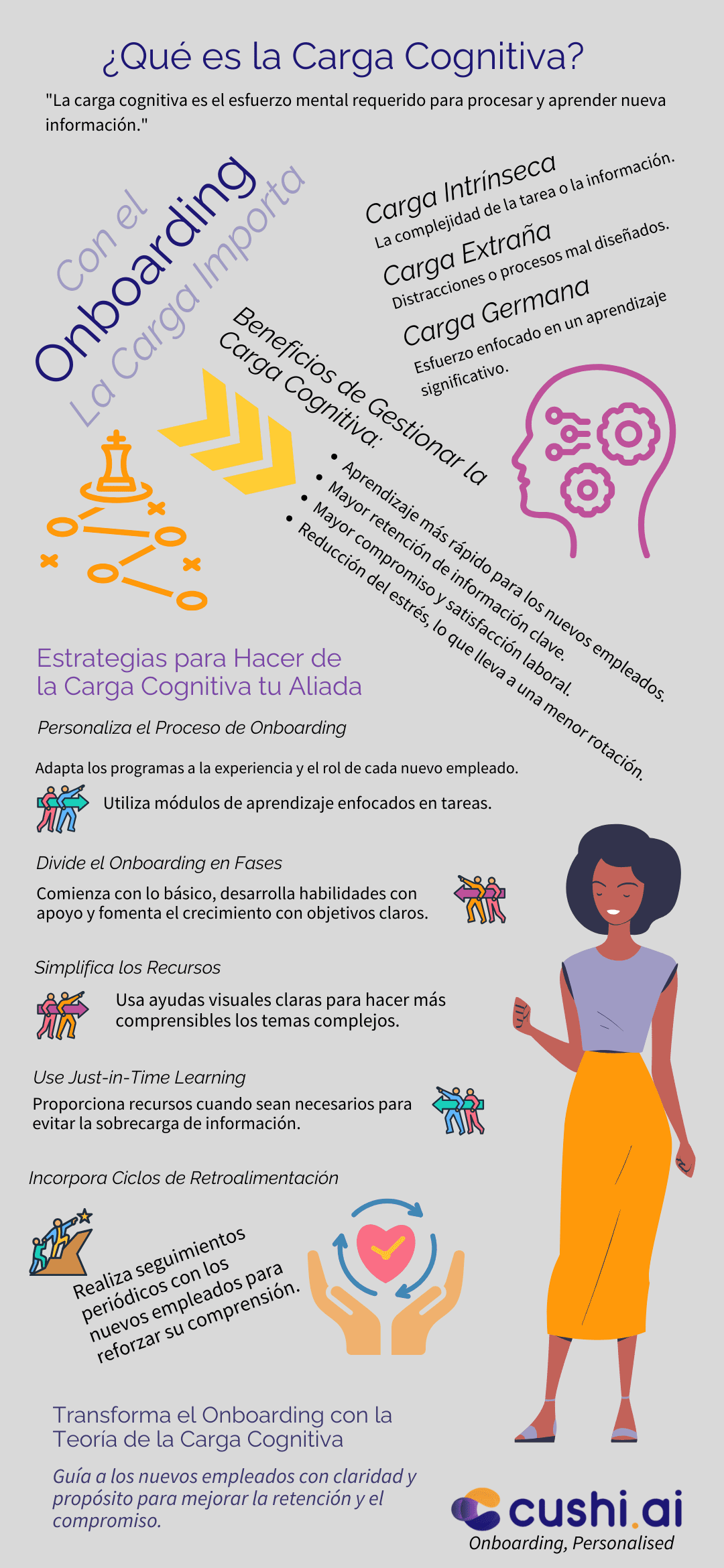
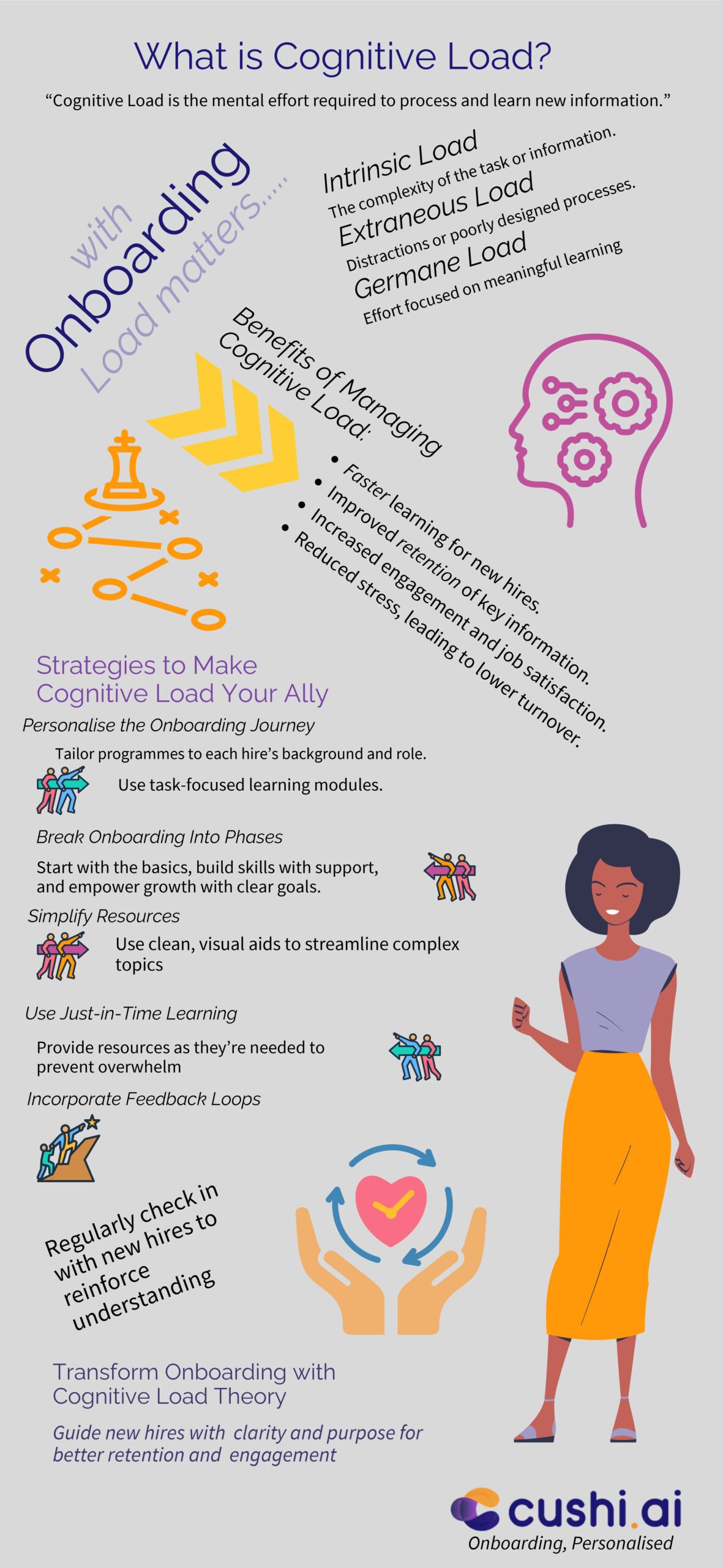
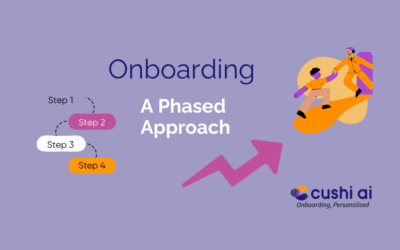
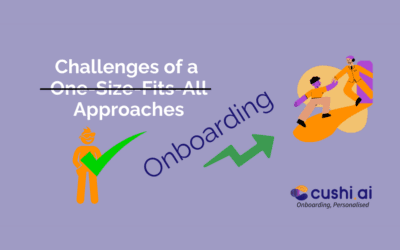
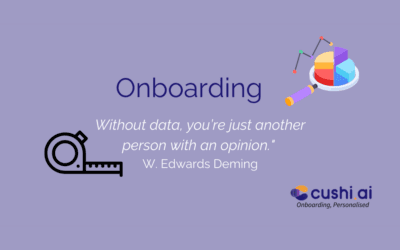
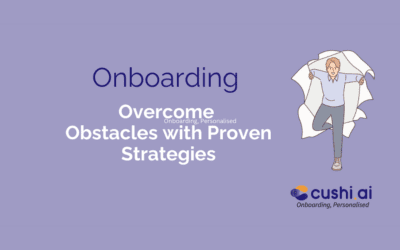
0 Comments